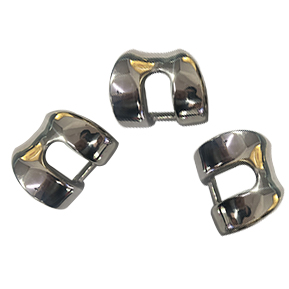 Service hotline:13691045053 |
Service hotline:13691045053 | ENGLISH
ENGLISH
News
2019-08-12 19:45:31
The research, development, production and application of titanium alloy materials for medical devices in China, as well as the emergence of typical representative medical device products, have epoch-making significance and revolutionary contributions to the development of medicine, making clinical treatment rise from the primary simple "repair and orthopedic" treatment to a higher level of "alternative" treatment of tissues and organs, greatly improving and improving people's quality of life, It has overcome the shortage of relying solely on drug treatment for major diseases in the past.

1. Development history of medical titanium materials and titanium alloys in China.
In the early 1970s, China began to use domestic titanium and titanium alloy products. In many hospitals in Beijing, titanium and titanium alloy artificial bones and titanium alloy artificial joints have been used for clinical treatment and research, and hip joints, elbow joints, jaw bones, etc. have been used for clinical treatment of patients. At the same time, some hospitals and companies have also carried out simulated body fluid immersion tests, electrochemical anodic oxidation tests and corrosion kinetics curve measurements, proving that titanium and titanium alloy artificial bones and joints have good corrosion resistance and small human biological reaction capacity, and are an ideal human implant. The mechanical properties of human bones and joints were also measured. It is considered that the strength of titanium and titanium alloy can meet the requirements of human implantation.
Since the mid-1980s, the amount of titanium materials used for artificial planting has been increasing, and the development and application of titanium shape memory alloys have reached the international advanced level. By the mid-1990s, titanium and titanium alloy processing materials had been widely used in orthopedic surgery, neurosurgery, cardiovascular system, oral and maxillofacial surgery, human culture machine and other fields. In recent five years, a large number of domestic enterprises have become artificial implant enterprises such as titanium and stainless steel. Hundreds of metal parts made of titanium and titanium alloys, such as femoral head, hip joint, humerus, skull, knee joint, elbow joint, shoulder joint, metacarpophalangeal joint, jaw and heart membrane, renal membrane, vasodilator, splint, prosthesis, fastening screws, have been implanted into the human body and highly praised by the medical community.
2. Classification and characteristics of biomedical titanium materials and titanium alloys
Biomedical titanium materials and titanium alloys are functional structural materials used in biomedical engineering, mainly for the production of surgical implants and orthopedic instruments. According to the professional standards for surgical implants and orthopaedic devices, titanium alloy materials can be divided into "metal materials" in "surgical implant materials", while titanium alloy materials can be divided into three categories of medical devices: non active surgical implants, active surgical implants and orthopaedic devices, which can be used as raw materials for cardiovascular, bone joint, bone synthesis, spine, orthopaedic devices, cardiac pacemakers and defibrillators, cochlear implants, nerve stimulators and other implant products. Biomedical titanium alloys can be divided into four categories according to tissue type: α Type I titanium alloy (such as pure titanium series) α+β Type I titanium alloy (such as Ti6Al4V) β Type I titanium alloys (such as ti12mo6zr2fe, etc.) and TiNi shape memory titanium alloys have the characteristics of low specific gravity, high specific strength, low elastic modulus, corrosion resistance, easy cutting, and good biocompatibility.

13691045053
0355-5025100
13691045053@sxwoge.com
山西省长治市潞州区长北桥东北路5号

